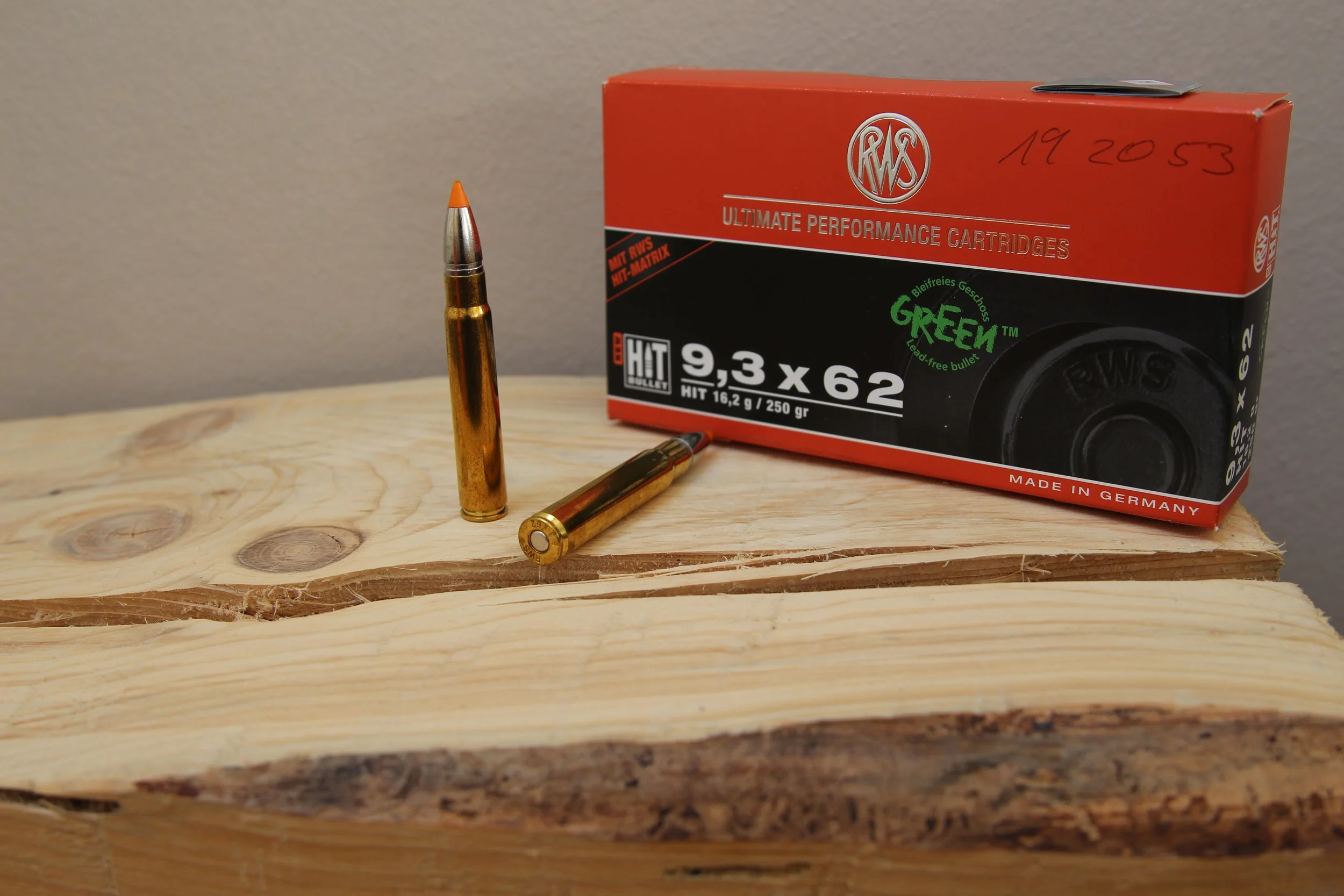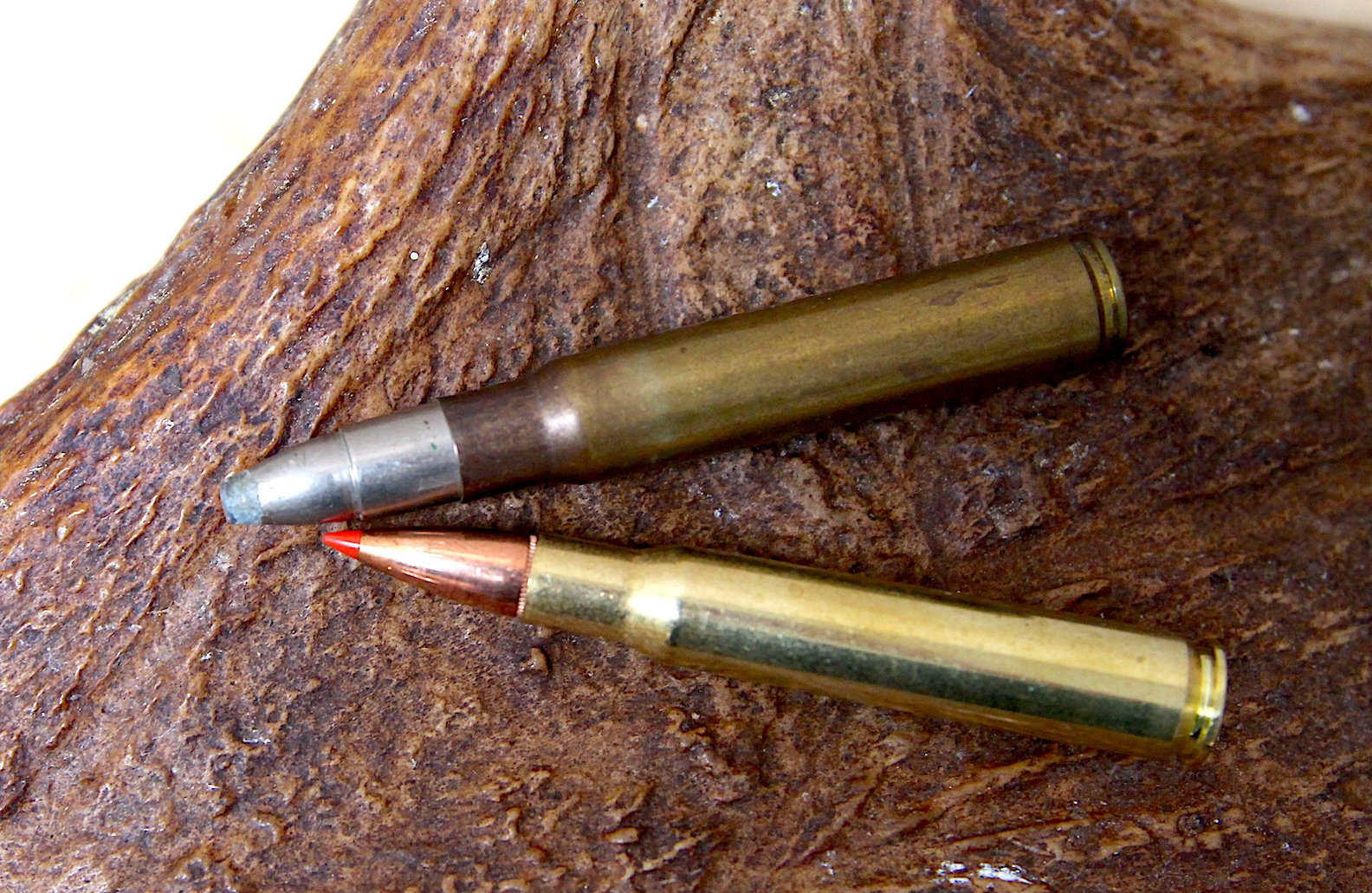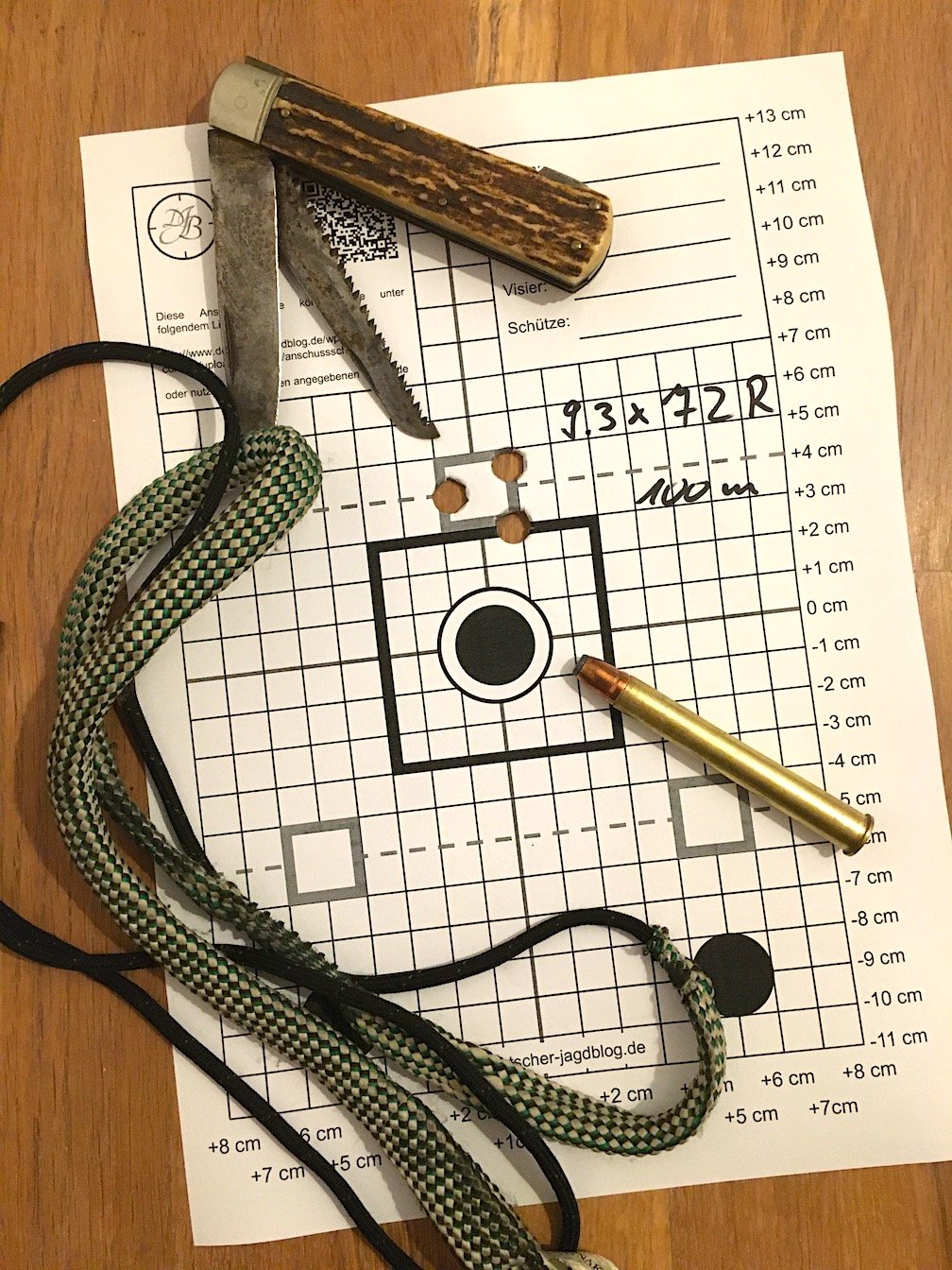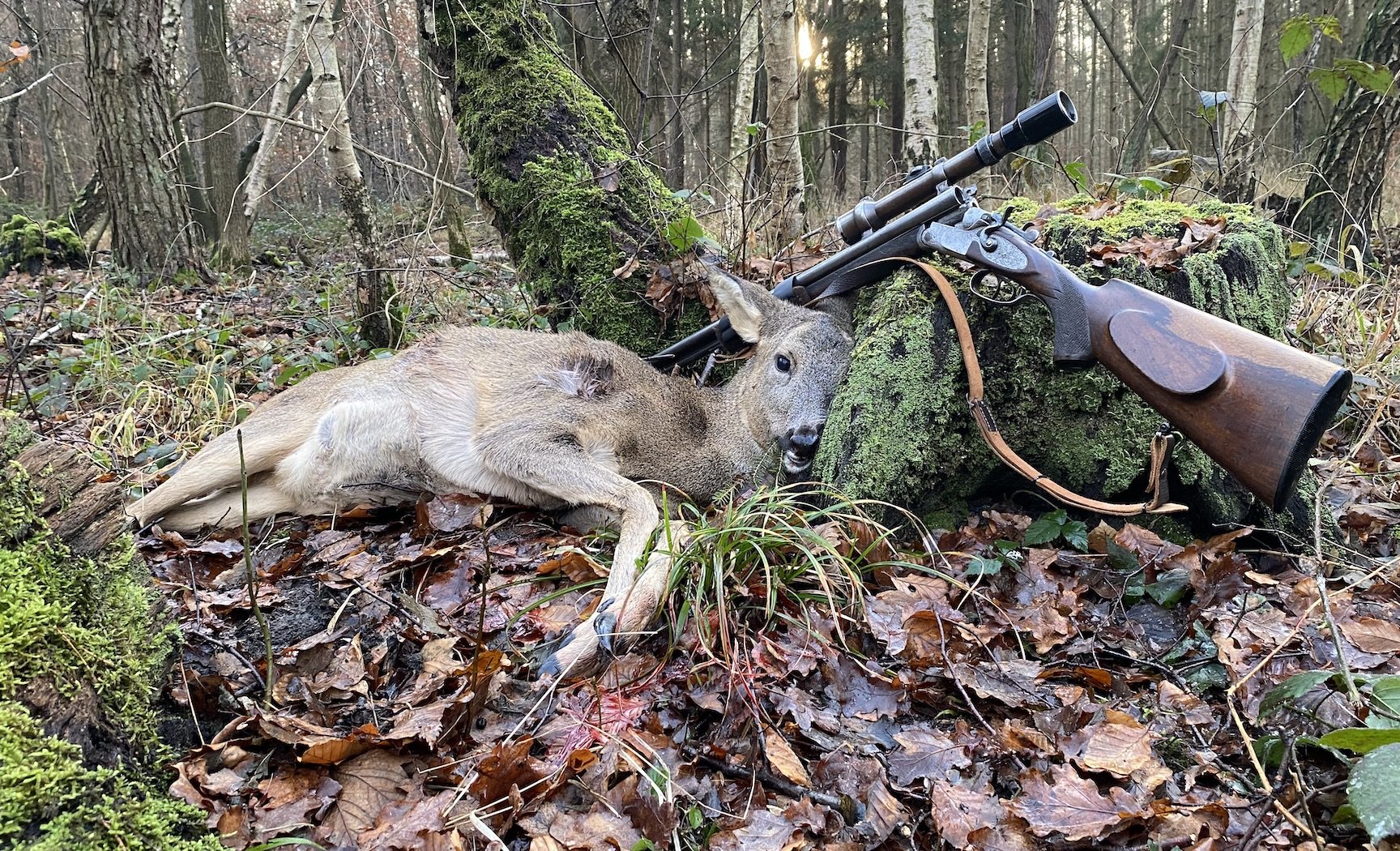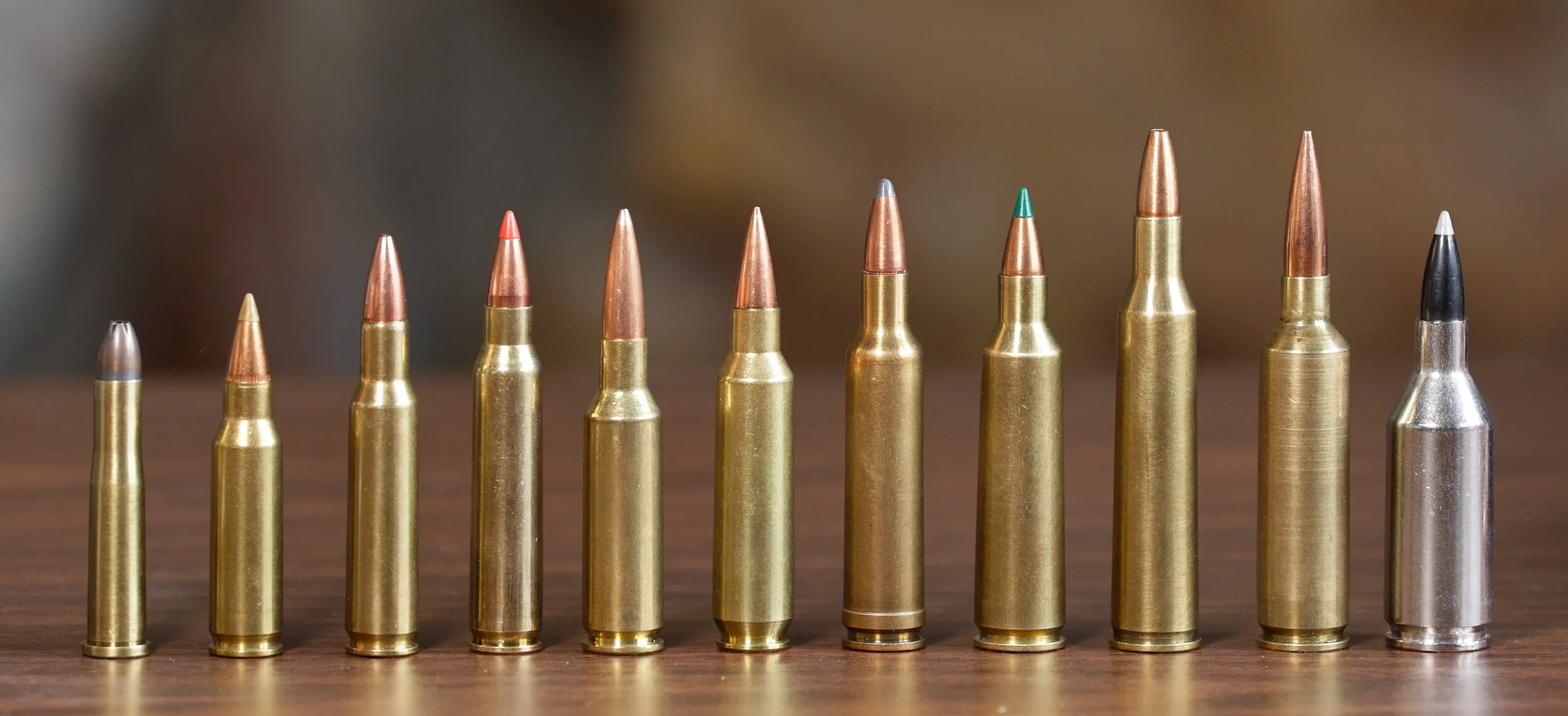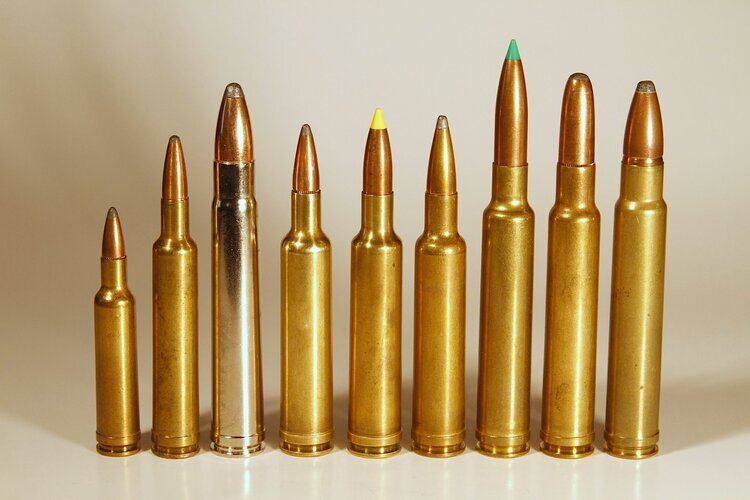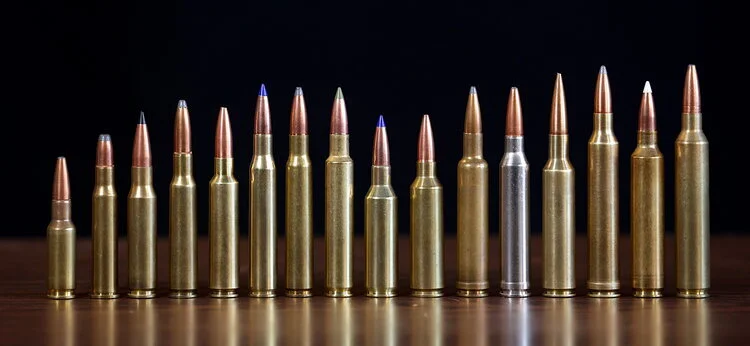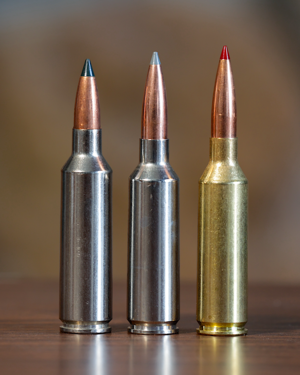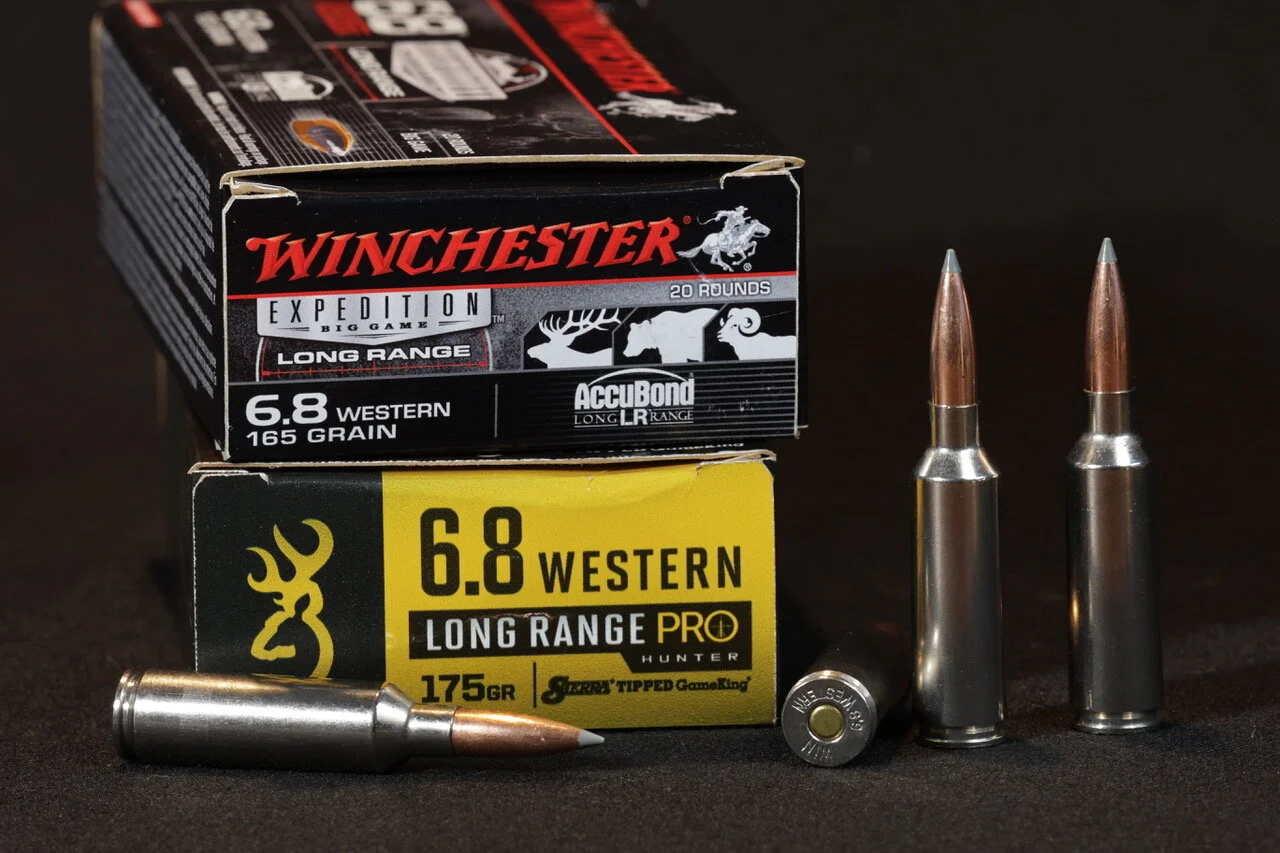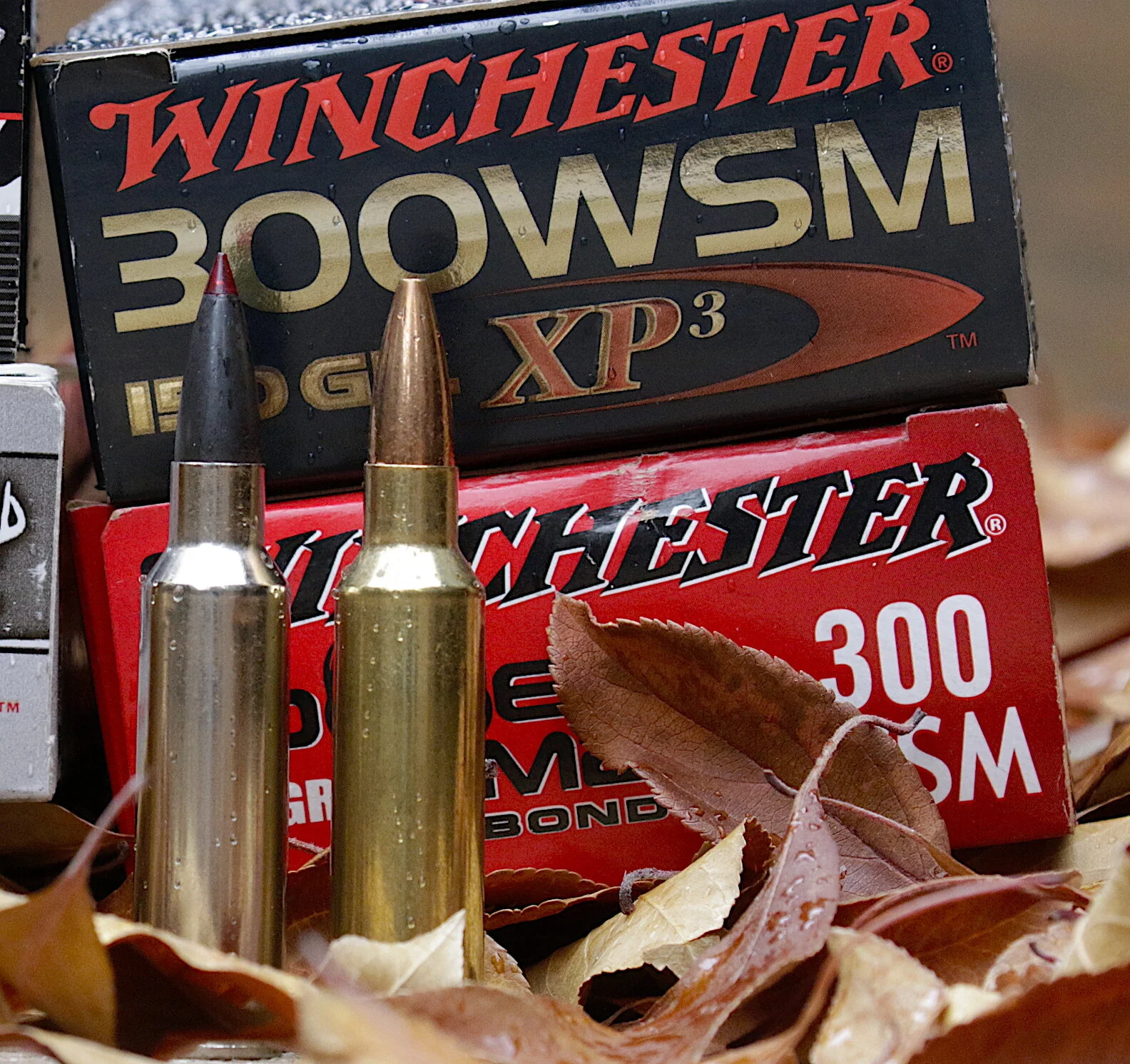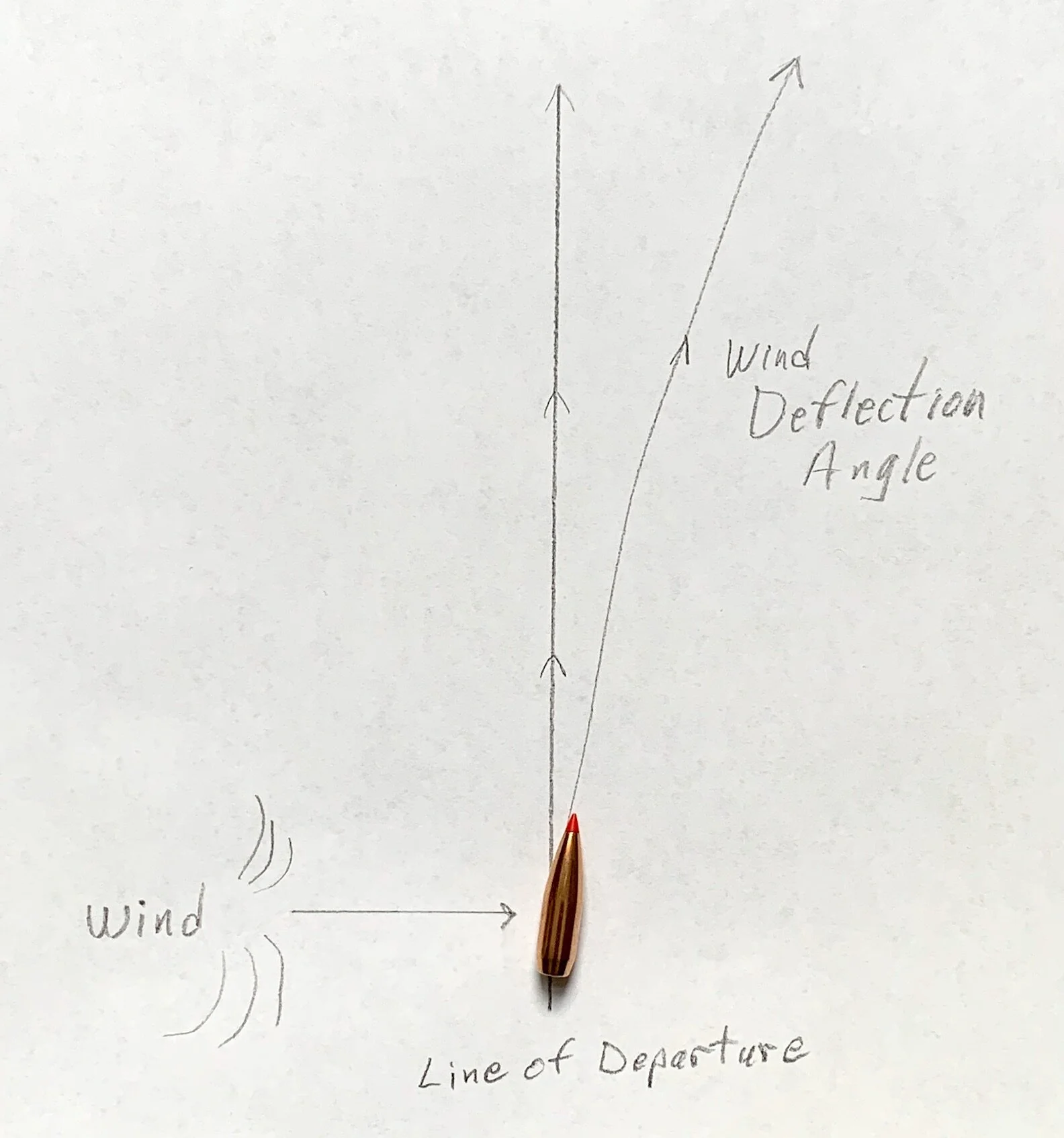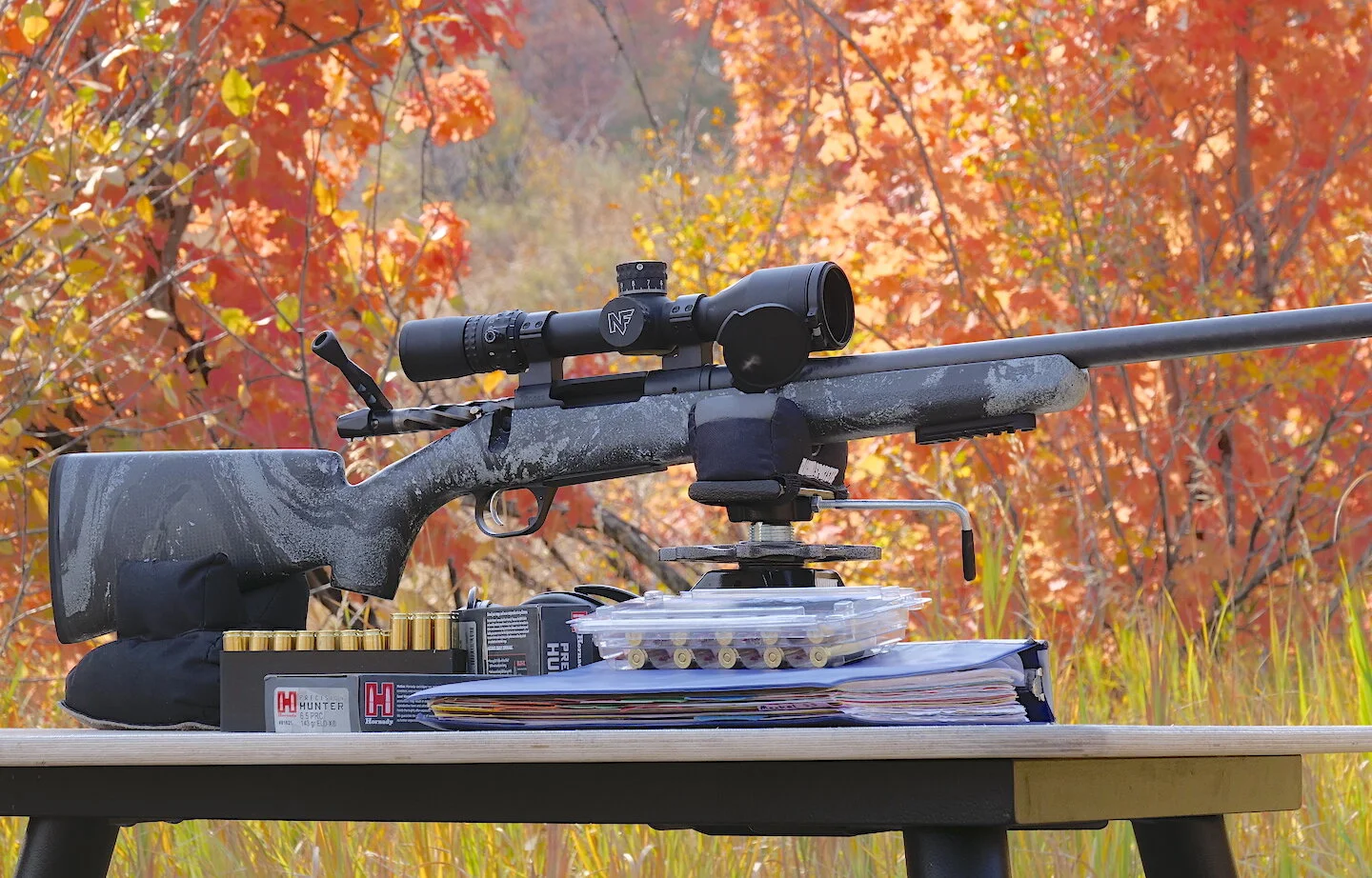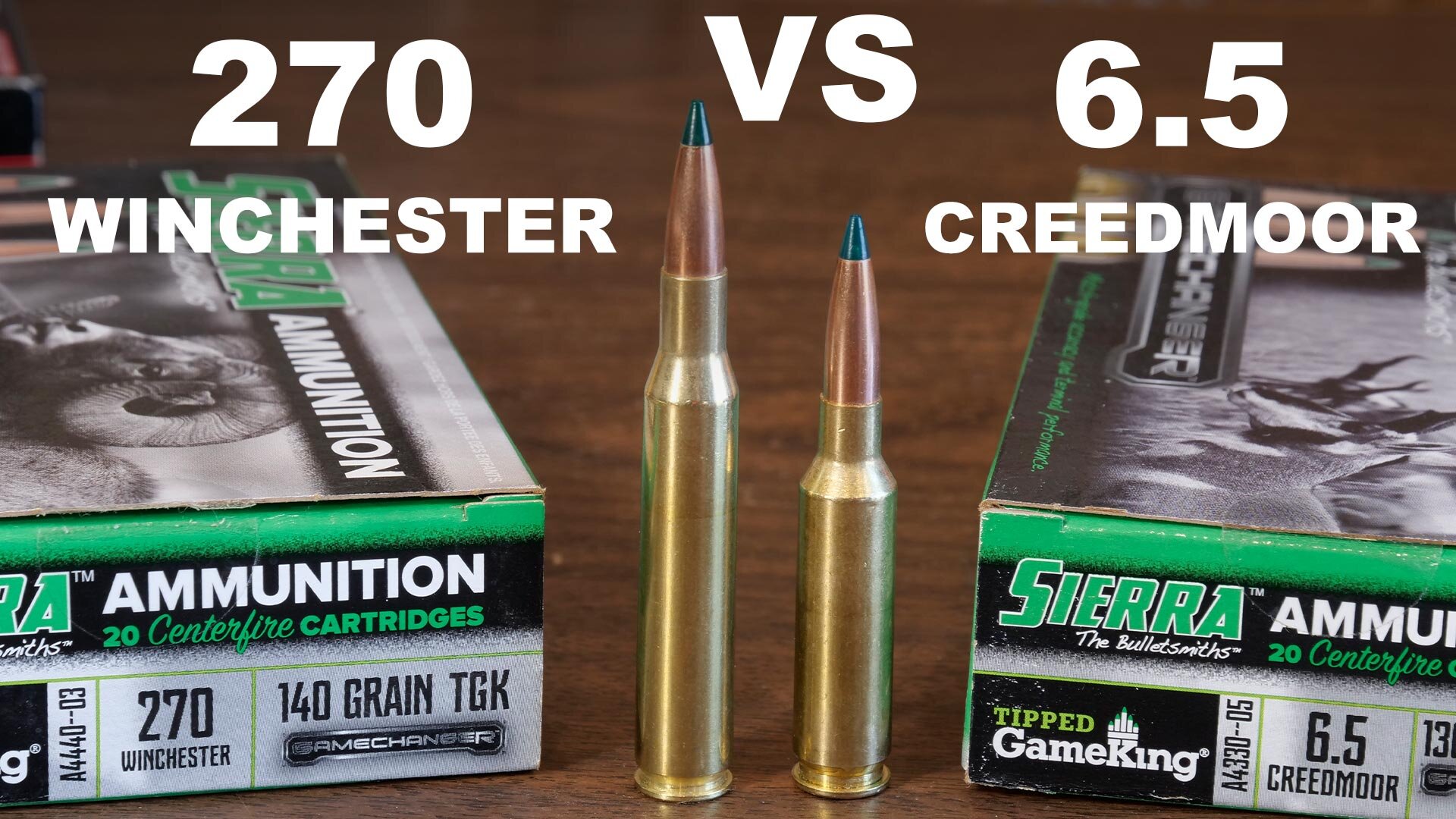The Different 9.3mm Cartridges
9.3x62mm, 9.3x74R, and 9.3x72R.
The 9.3 (.366-inch) diameter is one of the most versatile calibers for hunting bullets. Loaded appropriately in a variety of different cartridges, .366-inch bullets are a great option for game from small antelope and to moose, eland, even buffalo, and elephants. It’s perfect for predators like bears and big cats, for thin to thick-skinned animals of all sizes.
Most 9.3mm cartridges won’t have jaw-dropping speed, but substantial power. They excel for shots at short to medium range and in brush and woods. The large frontal area of these bullets puts an exclamation point to the sentence. And loaded with modern premium bullets in lighter weights, their historical effective range increases considerably.
Most 9.3mm cartridges were developed in continental Europe; Germany to be precise. Neither American nor British engineers used 9.3/.366 bullets a lot, although the oldest of the ones described in this article, the 9.3x72R, was based on the British .360 Nitro Express.
Actually, not all of the mentioned cartridges have a .366 diameter, although they are all considered to be 9.3mm cartridges. I will explain that in detail in every section.
Today it seems like ballistic coefficient numbers, bullet drop, and wind drift for long-range performance are the only things shooters want to discuss. But because the traditional 9.3 were not designed for long-range work, I won’t dive too deeply into the numbers game. The big 9.3mms are for the hunter who closes the gap. Figure 400 yards, 500 yards tops for the fastest of these. Hunters needing more reach should choose different cartridges.
But now, let’s see which 9.3 cartridges are available, and what they are capable of.
9.3x62mm
Also called the 9.3x62 Mauser, this is probably the best known 9.3mm cartridge in North America. This rimless and beltless cartridge was developed by German gunsmith Otto Bock in 1905. He designed it specifically for the ultra-reliable and affordable Mauser 98 system, so the two are a perfect fit and function. It was intended for African colonies and the big and dangerous game encountered there. Being developed for the standard Mauser action, it is considerably shorter than the .375 H&H, but almost reaches the latters power level. As standard Mauser systems are a lot cheaper than the longer magnum systems required for the .375 H&H, the cartridge was a great alternative for lower-cost rifles and saw a larger use between the two world wars. Compared to the dangerous game double rifles of the day, the 9.3mm guns were downright cheap.
The average load for the German cartridge is a bit less powerful than the .375 H&H, but it is still very useful for game up to buffalo. Although the extreme minimum for pachyderms, 9.3 bullets have felled countless elephants. Considering it almost carries the power of a .375 H&H out of a standard length cartridge, the old design even compares well to the modern .375 Ruger (which itself is a bit more powerful than the H&H, but they all play in the same league).
One thing to point out is the higher sectional density of 9.3mm/.366 bullets compared to 9.5mm/.375 bullets of the same weight. This gives the continental cartridge a real-world advantage in penetration on the really big game. Combine that with mild recoil, which makes good shot placement easier, and you have two reasons for the cartridge’s good reputation. Deep holes punched into the right spot usually equal meat on the table.
Historically, it was designed in a time of political conflicts between various European countries. Both Germany and the British Empire tried to increase their influence on the Dark Continent, establishing and protecting colonies. So although the 9.3mm outdated the .375 H&H, the latter grew to be an African classic. That is because the British Empire banned the use of bullets smaller than .375 inches on dangerous game in its jurisdiction, and that played a large role in the lesser distribution of the German design. But of course, the British gunsmiths knew when they saw a good thing, and developed their own medium bore cartridge for bolt actions.
Comparisons, old and older: 30-06, 7x65, 7x64, 8x68, 9.3x62, and 9.3x74R.
As a result, neither British colonies in India nor Africa saw widespread use of the cartridge, and the H&H became the queen of the medium bores. But some countries, Mozambique and Zimbabwe for example, do allow the use of the 9.3x62mm on dangerous game. In countries like Namibia, which saw more of a German influence than others, the cartridge is still quite popular for large antelopes.
In continental Europe on the other hand, the cartridge builds its name on the superb effectiveness on wild boars, red deer, brown bears, and moose. Driven hunts across Europe are the perfect stage for this round, as it hits hard enough without punishing the shooter too much. A fast series of shots on a sounder of wild boar is possible without the tooth rattling recoil other hard hitters are known for. Scandinavian moose hunters also rely heavily on performance, and this 9.3mm trails only the .30-06 Springfield as the most popular moose cartridge.
While usually launching bullets in the 230- to 300-grain range at respectable velocities, rifles chambered in the 9.3mm Mauser are relatively easy on the shooter’s shoulder. Heavier bullets with “sub-magnum” speed tend to push more than kick. And since powders used in this cartridge are medium to fast-burning, shorter barrels don’t lead to excessive velocity losses. All the powder is burnt, no matter if the barrel measures 24 or only 20 inches. Therefore, 9.3x62 rifles are often lighter and shorter than rifles built for other chamberings of this power. And the lesser recoil usually translates to better accuracy, so this is another plus.
In North America, the 9.3 Mauser will shine in brushy country on hunts for big and really large animals, up to the big bears. Controlled expansion bullets will guarantee deep penetration, the big frontal area knock-down power, and the moderate pace of the heavy bullets may forgive a little more brush in the shooting lane than high-velocity bullets. In moose, elk or bear country, and even in the deer woods for the matter, the German design is guaranteed to become a trusted friend. (Here’s an American’s take on the 9.3x62.)
Since there is a small, but faithful group of fans in the US, quite a few manufacturers sell factory loads for the 9.3mm Mauser. Nosler, Federal, Swift, and Hornady offer some good choices. Handloaders will have their fun with the chambering, too, as it is said to be easy to hand load for. Also, there are lots of .366 bullet designs for different hunting scenarios. Weights range from 150 grains to 300 grains.
Tikka, Sako, CZ, and others build affordable bolt-action rifles for this big Mauser cartridge. A few years back Savage sold a “Euro” model of the 110. Sauer, Mauser, Blaser, and others offer more expensive and exclusive rifles along with their lower-cost models such as the Sauer 100 or the Mauser 18. (Read about a U.S.-built custom bolt-action on the M704 CRF action in this review.)
This German cartridge doesn’t excel where long-range shots are the rule. The trajectory doesn’t allow for shots beyond 200, maybe 250 yards without tools like turrets, range finders or ballistical reticles. But when shots are taken in close quarters, and stopping power is required, few cartridges will serve better than a 9.3x62. And if using a lesser-known cartridge sounds appealing to you, then a 9.3x62 should be near the top of your wishlist.
9.3x74mm R
The most popular 9.3mm in Europe on this list offers almost the same performance as the 9.3x62, and is considered her “rimmed sister” (hence the “R”.) From a design standpoint, both cartridges are not related, although they both were released almost simultaneously at the beginning of the 20th century. It’s not known how the cartridge was designed, but some think it is a combination of the 9.3 bullet of the 9.3x62 and the case of the .400/.360 NE. As the name suggests, the rimmed cartridge shows a longer case, which is considerably sleeker. Because the 9.3x74R is intended for use in breach-action guns like drillings and double rifles, this sleek round can be housed in handier and trimmer designs than shorter and thicker cases.
This cartridge works on a lower pressure level than its sibling, since many breach-actions are not as strong as bolt actions. But that also means quite low felt recoil, especially out of heavier doubles and drillings. Almost any shooter should be able to shoot such a gun without developing a flinch. Few cartridges pack 9.3x74R punch and knockdown power with recoil so mild and manageable.
To this day, the cartridge is often called “the queen of big game hunting.” This reputation was build on the incredibly versatile combination guns that were and are so popular in Europe.
Combination guns with a 9.3mm caliber offer superb flexibility in the woods. When used with open sights or with low power scopes, anything from partridge to moose is on the table. With insert barrels in .22 to .264 (that means 5.6-6.5mm) calibers, the drilling becomes the most versatile gun one can imagine. Birds, predators, deer, moose, bear and even bison may all be targeted with the same gun. For shots longer than 200-250 yards there are better tools, but that’s not what the cartridge and most break action guns,are built for anyway.
Double rifles are extremely useful on driven hunts in Europe, as nothing beats a double rifle when following up on a wounded animal. As I‘d face any wild boar with a 9.3mm double in my hands, I would not second guess a bear guide using such gun when following wounded bears into brush. It is not without reason that a lot of African PH‘s trust a potent double when their life depends on quick and precise shots at dangerous game. In Africa, the 9.3x74R is still popular with farmers and outfitters of German descent.
The same .366 bullets from 150 to 300 grains can be used in the rimmed cartridge. Factory loads with typical 220- to 293-grain bullets are harder to find in the US and Canada, but handloaders can build light loads at .30-30 Winchester-levels or heavy loads nearly equaling .375 H&H.
In Europe, a 9.3x74R drilling or a even double rifle can be found in the used market for very reasonable prices. They are probably harder to come by for our American friends, but Ruger used to build the No. 1 falling block rifle for this chambering, too. Even more than the rimless 9.3mm, a fine break-action gun in this cartridge will start conversations about calibers and guns at camp. When showing up with a gun like that, you’ll probably be asked to hand it over for a closer look.
9.3x64mm Brenneke
9.3x64 Brenneke lying atop moose antler with 30-06 Springfield for comparison.
The hardest hitter in this group was developed by the famed German gunsmith Wilhelm Brenneke in 1927. Brenneke also invented the 7x64mm and the 7x65mmR, special kinds of cup and core bullets, two-core bullets, shotgun slugs and a lot more. The list of his patents is long. For the 9.3x64mm, he did not use a parent case and modify it, but came up with the shockingly modern design by himself. This cartridge was built around the Mauser Model 98 rifle and fits in a standard-length bolt action system. It offers even more power than the 9.3x62mm, and might even slightly exceed the performance of the .375 H&H in some factory loads. It has a more compact case with around 8% less capacity. In this regard, the cartridge is more efficient and reminds me of the .375 Ruger, which is the child of a whole new era of cartridge design.
Especially in Africa, the Brenneke cartridge was historically more popular than the 9.3x62mm of 1905 due to its extra punch. In the first years after WWII it outsold the older cartridge. That changed when European hunters realized the older design offered all the power they needed and all the recoil they wanted to tolerate for European big game. In British Africa it suffered from the same caliber restrictions as all other 9.3s, but hunters of German descent kept using it. To this day, you won’t find an outfitter who dismisses Brennekes 9.3mm for large critters — as long as it is legal. North American guides should feel the same way. If a European hunter shows up in bear or moose camp with a 9.3x64 Brenneke, get ready to skin and pack.
The small variety of factory loads, especially solids for dangerous game, stymies a resurgence of this cartridge. Only Brenneke, RUAG/RWS, and a few smaller manufacturers offer a relatively small choice of different (and not very cheap) loads. Again, handloaders are at an advantage with a wide array of 9.3mm bullets including solids to choose from. They can also load the cartridge down to the level of a 9.3x74R or even further, which widens the range of practical use. Even the smallish roe deer can be hunted with such loads without excessive meat loss. One might wonder if there is any need for a cartridge like this when it is tamed to perform like a small bore or allround cartridge. But using a rifle that can ethically kill game from 50 pounds to over 5 tons with adjusted loads brings the one rifle concept to a whole new level. So in the end, this chambering might be one of the most, if not the most versatile cartridges ever designed.
30-06 Springfield (L.) compared to 9.3x64 Brenneke and 9.3x72R.
This design offers the most speed of the discussed 9.3mm‘s. If one wants to extend the range with a .366 bullet, this is the way to go. The heavy for caliber 293-grain slugs travel at around 2,580 ft/s, and that is not bad at all. For comparison, 300-grain bullets in 375 Ruger travel 80 ft/s faster. That is too little of a difference for the game to notice. Lighter .366 bullets of 220 or 225 grains almost crack 3,000 ft/s. So there actually is a potential for quite flat trajectories on shots inside 300 to 400 yards with the 9.3x64mm. After that, the less-than-perfect bullet shape prohibits top-notch long-range performance.
Rifles for Brenneke’s 9.3mm are affordable when obtained second-hand, but new rifles are rare. Most options are Mauser Model 98 rifles or variants. Barrels are usually long, at least 24 inches. This ensures the complete burning of the powder and adds weight. Enough weight is important, as recoil and muzzle blast of the regular 9.3x64mm loads are definitely on the snottier side.
If an obscure, potent, hard-hitting cartridge with a design way ahead of its time is what you fancy, don’t overlook the 9.3x64mm Brenneke. If you get hold of a quality rifle in good condition, and you can solve the ammo problem, don’t shy away. The 375 Ruger might be “in” but this 9.3mm will do everything the Ruger does for you with a lot more history and flair to its name.
A rimmed version exists as the 9.3x65R. But this cartridge vanished into the history books of hunting. Maybe an ammo manufacturer someday teams up with a rifle company and rejuvenates this caliber for doubles or drillings. But as of now, one has to look elsewhere for a rimmed 9.3.
9.3x72mmR
Straight-walled and long, the old 9.3x72Rimmed stands alone as a blackpowder era holdover.
This is the oldest of the group. The rimmed “foresters cartridge” was widely used by professional hunters managing the forests of Central Europe in the early 20th century. The cartridge was developed in the late 19th century with the .360 Express as a parent case, first with black powder, later with both smokeless powder and black powder. It was part of a series of 9.3mm cartridges (in this case .364 inches) of different lengths, of which it was the most popular. Today, the cartridge still exists, though on the brink of extinction. But a few hunters still like to relive the history of this cartridge. And to this day there are smokeless powder factory loads available. The original black powder loads are not produced anymore, and there are no new guns built for this german classic.
After invention as a black powder cartridge, this long cartridge was soon loaded with smokeless. Still, most of the newer loads just don’t quite measure up to today’s standards for legal hunting use in some countries. There are a few loads that make the grade, but just barely. It simply isn’t easy to get higher performance levels without exceeding safe pressure levels in the old guns. So there are better options for dedicated big game hunters, but when targeting smaller game like roe deer (which is a smallish deer species that doesn’t count as big game in Germany,) it is fun to use the old 9.3x72R. The cartridge was and is mostly chambered in break-action combination guns, mostly drillings. With an extremely low maximum pressure of 21,100 psi, the cartridge is safe to operate in very simple break actions.
The 9.3x72R has certainly accounted for countless roe deer. It definitely was effective on big game such as wild boar and red deer. It had a reputation for great killing power that probably was more a product of careful shot selection, shot placement, and short distances than some magical ability to punch above its weight. Some folks even argue, with a wink, that the round will shoot through small trees without bullets breaking or deflecting. That’s more tales than truth, but given its low velocity, it probably is not susceptible to deflection.
Old world classic. The 9.3x72R barrel of this drilling (drie=3, drilling meaning triplet) with external hammers dropped this roe doe.
Simple factory loads with 193-grain cup and core bullets travel at 2,004 fps, carrying 1,720 ft-lbs of energy at the muzzle. For comparison, that is less energy than a regular .30-30 Winchester has at the muzzle, and most .30-30 loads are not legal on big game either over here. Because of the age of available 9.3x72R rifles, it’s not wise to work up hand loads that might be legal, but may stress the actions too much. With this cartridge, it’s probably best to work within the boundaries developed over decades.
Every now and then, one can find drillings or over-and-under rifle-shotgun combination guns offered on the used gun market. Most of them have external hammers, which I find to be a wonderful feature for the historically interested hunter. Shot with old scopes of yesteryear or open sights, any buck is a trophy.
It is important to know if the individual gun is built for black powder only because those are collectors guns for most people. But personally, I like the thought of someday owning one of the later drillings, carrying it into the stand, and taking a roe buck with such a special part of gun history. With the right offer, I probably won’t be able to dismiss a fine hammer drilling gun.
Conclusion
When it’s all said and done, the cartridges of 9.3mm/.366/.364 diameters offer more than enough versatility, performance, gun options, and flair to be considered when choosing a new setup for wood hunters and those who like the history of metric chamberings. With each and every one of the cartridges in this article, you’re well served. If you enjoy being the one with a different gun in camp, go ahead and pick one of these fine cartridges from Germany and put some meat on the ground.



